Start 14-Day Trial Subscription
*No credit card required

50 Impactful Stories from 50 Issues of The Beer Connoisseur
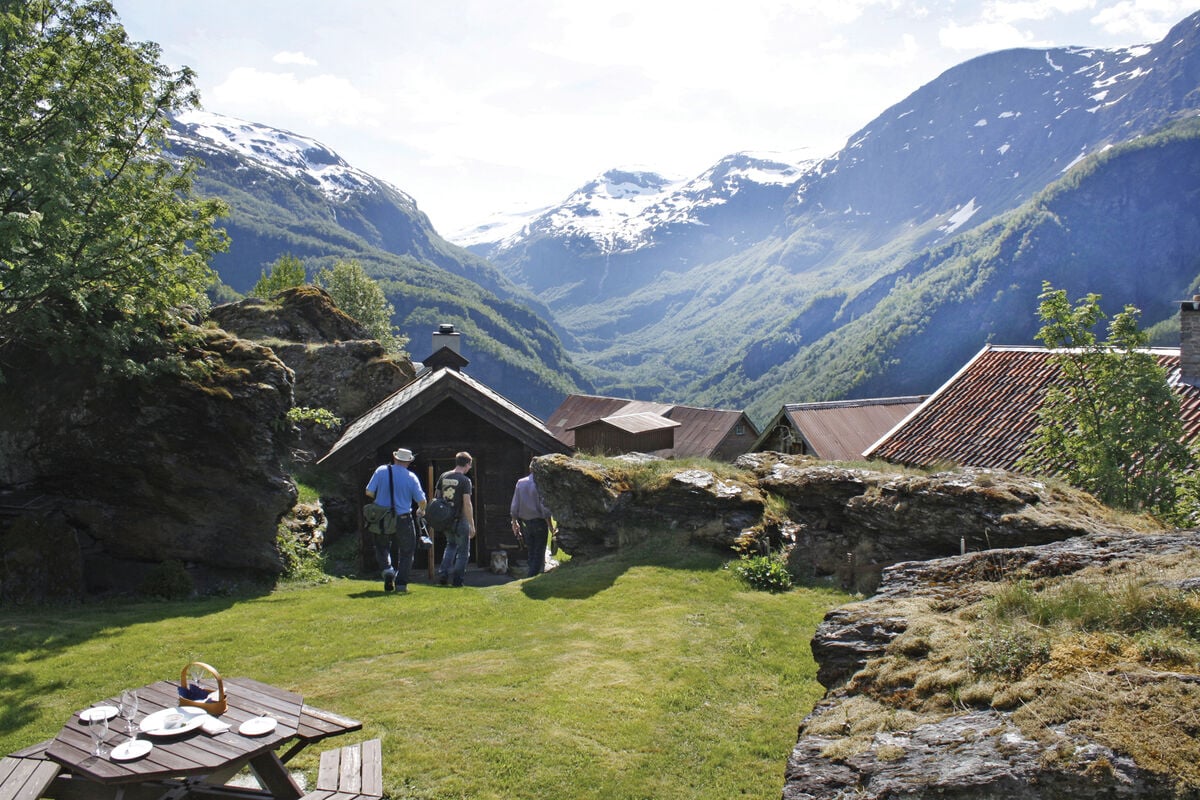
In Search of Norway's Brewing Traditions
by Martin Thibault
Such was the importance of beer in the majestic fjords of olden Norway, the idea of spilling one’s own homebrew was appalling, even while traversing the country’s typically vertical terrain. Beer played such a significant role among Norwegians that ailing people used to make sure homemade malt was ready for brewing when sensing oncoming death. One would not want to serve unworthy beer at one’s own funeral, right?
But more importantly there was beer to be shared at Christmas. Families throughout the country made beer for the holiday season, a potent, malty-sweet brew that was shared with neighbors as well as relatives, made through age-old methods passed from generation to generation.
These fascinating traditions, alongside many others, are thoroughly documented, region per region and process by process, in author Odd Nordland’s study of brewing in Norway published in 1969... CONTINUE READING

HOLIDAY / WINTER 2014, ISSUE 17
Pete Coors Talks Craft Beer
by Jonathan Ingram
The western view from the office of Pete Coors in Denver is a spectacular vista of the rugged snow-capped peaks of the Rocky Mountains’ Front Range. “You can’t see Golden from here, but you can see the gap between the two mesas where the road goes,” said Coors.
Coors literally grew up at the family brewery in Golden, living within its confines until he was seven years old before his father finally broke the German tradition of maintaining a house at the brewery and moved to one overlooking it. “I grew up dodging trains and sneaking into the malt house,” said the fourth generation beer executive – now rugged and snow-capped himself at age 68. “You can’t do that anymore.” ... CONTINUE READING
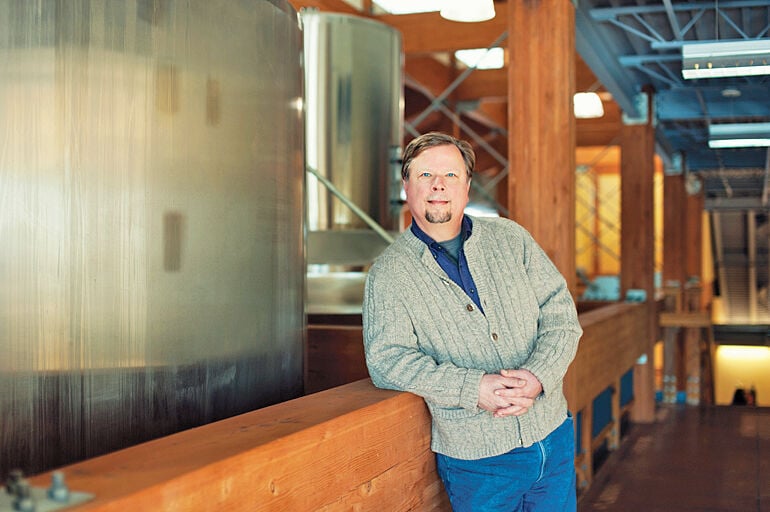
Larry Bell of Bell's Brewery
by Owen Ogletree
During the fledgling days of Bell's Brewery, founder Larry Bell found himself in a bind. He needed to drive around Kalamazoo, Michigan to complete deliveries of his popular Amber Ale, but his seven-year-old daughter Laura was sick and home from school. While Bell labored to get the brewery off the ground, his wife worked a regular job to help pay the bills. So, he strapped Laura into the van with some paper and crayons and hit the road.
Shortly after driving past Laura's school, Amberly Elementary, Bell looked over and noticed his little girl had sketched a beer label called Bell's Amberly Ale. "This label included a logo and everything," he recalled. "It featured a guy with crazy eyes and hair sticking straight up. Laura called him 'Mr. Ale.' If the school ever saw this, I knew I'd be in trouble." ... CONTINUE READING
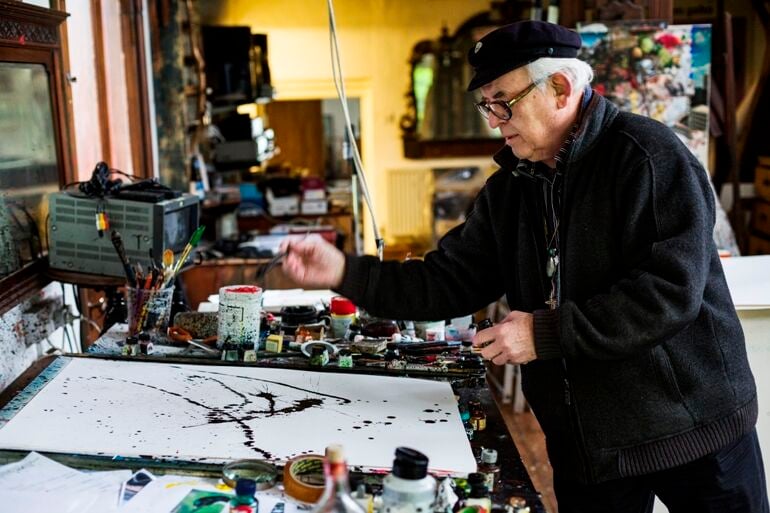
Ralph Steadman and the Gonzo Art of Flying Dog Brewery
by Bob Townsend
Suddenly, it feels like a seance. I’m staring at the ink-spattered, bug-eyed image of a snarling dog that seems poised to fly out of my computer screen on bat wings. On the phone from his studio in Kent, England, artist Ralph Steadman is channeling the grumbling voice of his departed friend and famed Gonzo journalism cohort, writer Hunter S. Thompson.
Steadman as Thompson is telling the artist that he might like to think about doing some art work as a favor to patron and neighbor, George Stranahan, the co-founder of Flying Dog Brewery in Maryland.
“Come on, ah, Ralph. Ah, ah, this will be good,” Steadman says, searching the past for the shadows of Thompson’s halting Kentucky drawl... CONTINUE READING
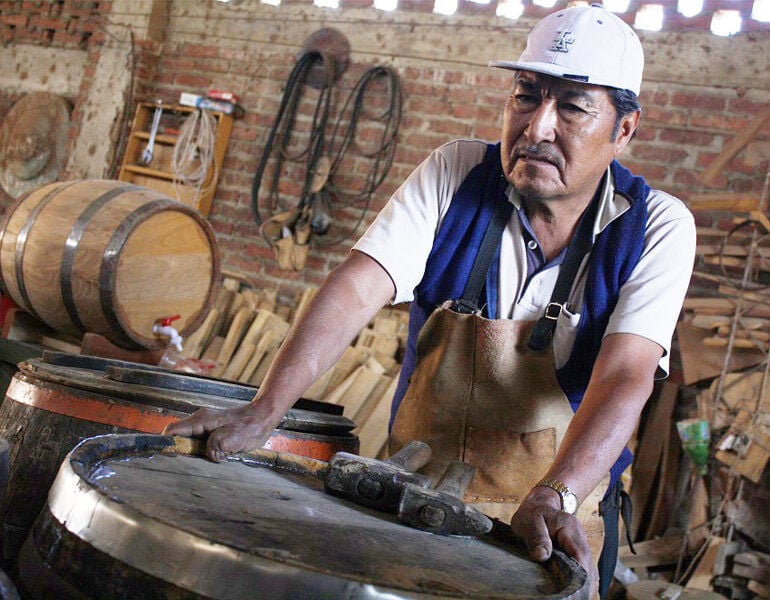
Chicha: Bolivia's Tart Beer
by Martin Thibault
Gentle tartness from citrusy and lactic acidity. Straw-like cereal flavors and very low carbonation. A dry mouthfeel, a rustic juxtaposition of ingredients and no herb or hop presence. If this description sounds familiar, that is perfectly normal. These are flavor and texture characteristics that the Western beer world has already accepted. But it has never quite adopted chicha as a proper beer style.
Sure, the word chicha has broad shoulders in Central and South America, referring to many kinds of beverages, alcoholic or not. Let's not allow this all-inclusive terminology to blur the understanding and appreciation of what can sometimes be a tantalizing tart brew. If unblended lambic, Berliner Weisse and other olden styles of the sour sort are considered to be beer, the traditional chicha made by the Quechua people in the Cochabamba valley of Bolivia also deserves to be recognized as a bona fide beer style. From malting their own corn to conducting decoction mashes, from letting the wort sit at lukewarm, acidifying temperatures to geeking out on serving methods and levels of drinkability, the Bolivians who still honor their Incan brewing roots are every bit as much of beer brewers as those we revere on the other side of the Atlantic... CONTINUE READING
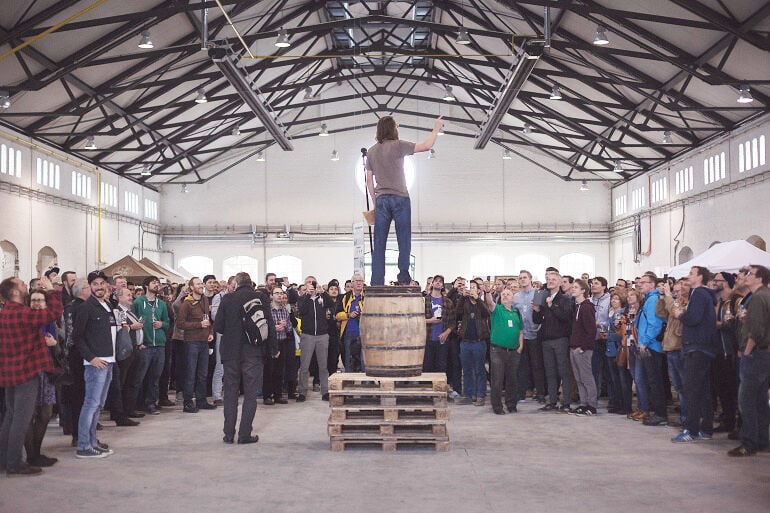
Greg Koch of Stone Brewing Co.
by Jay Brooks
As the one-day “Sensory Evaluation of Beer” class began, students filed into the UC Davis classroom. Homebrewer Steve Wagner, who’d spent the better part of the 1980s playing music, primarily with the I.R.S. Records-signed band “The Balancing Act,” looked around the room and thought he recognized someone. Wagner walked up to the familiar face and asked him, “Aren’t you Greg Koch from Downtown Rehearsal?”
That was the early 90s, and by 1996, the two musicians opened Stone Brewing Co. in San Diego County, which today is the eighth-largest craft brewery in America, based on sales volume, and the 14th biggest brewery of any kind. Stone operates two breweries in the San Diego area, with two more currently being built; one in Richmond, Virginia and another in Berlin, Germany. They also operate a tasting bar in their local airport and grow some of their own food served in their restaurants at Stone Farms. Their beer is distributed in 41 states, plus D.C. and Puerto Rico, and exports small amounts of its beer to eight different countries... CONTINUE READING

Hugh Sisson of Heavy Seas Beer
by Owen Ogletree
Hugh Sisson, founder of Heavy Seas Beer, definitely makes the cut on any list of the most influential American craft beer pioneers. Hugh guided his fledgling brewery through the troubled waters of the late '90s when the first craft beer "bubble" burst. In his words, "In those days, we were playing the game not to lose, instead of playing the game to win."
Throughout the years, Sisson has employed creativity, business smarts, adaptability and a deep adoration of magnificent beer to guide his brewery plan and remain successful, even in today's wild and wacky craft beer market. For almost 35 years, Sisson has been instrumental in introducing craft beer to the Mid-Atlantic region, influencing brewery legislation and setting the tone for today's craft beer culture... CONTINUE READING
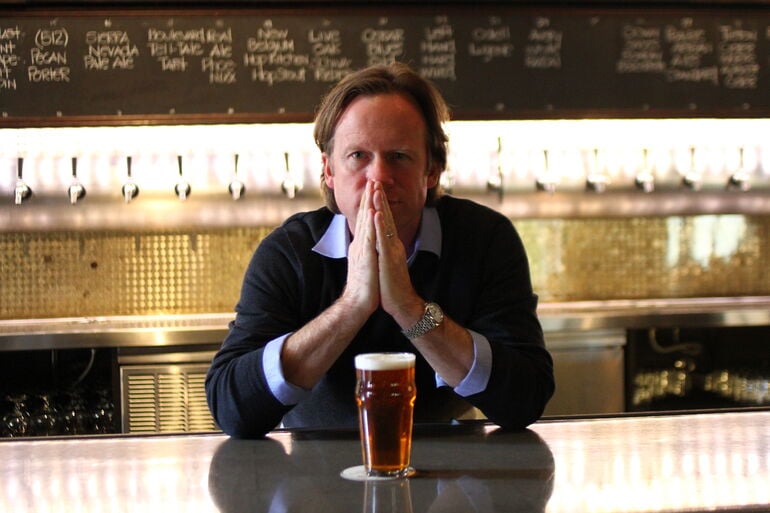
Keith Schlabs of Flying Saucer
by Jim Dykstra
There are infinite points of entry into the beer business, but one you won’t see too often is “Beer Guru.” As a successful beer-focused restaurateur with more than twenty years of experience, Keith Schlabs has watched the metamorphosis of craft beer from a one-of-a-kind vantage point – interacting with brewers, distributors and the public at large – and gauging the ever-changing tides of taste. He spoke with The Beer Connoisseur about the state of the industry, and what it takes to be successful in life and beer.
“EXTRA-BEER-ESTRIAL”
Before co-founding the Flying Saucer Draught Emporium, The Meddlesome Moth and four other restaurant concepts, Schlabs was a young restaurant manager in Texas. The year was 1993, and the beer universe was still fighting its way out of the primordial booze... CONTINUE READING

Bob Leggett: Founder of Artisanal Imports
by Jim Dykstra
For Bob Leggett, 1977 was a landmark year. It was the year he broke into the beer business, and the year he started sporting a beard. Bob's been around ever since – as a natural storyteller, he's a perfect fit for a profession where sales are based on the strength of a product's story. The beard has also remained. It's a fitting symbol of the man and his commitment to both time-honored tradition and the growth of the beer industry.
We talked to Bob about the “locals only” mentality in beer, how he helped shape the Corona bottle, and the surprising cultural exchange that craft beer has spurred.
Finding Spirit in Beer
Before founding Artisanal Imports, which has prided itself on bringing some of Europe and South America’s most carefully cultivated beers stateside since the turn of the millennium, Bob was fresh out of Austin-based St. Edwards University with a business degree but no particular direction... CONTINUE READING
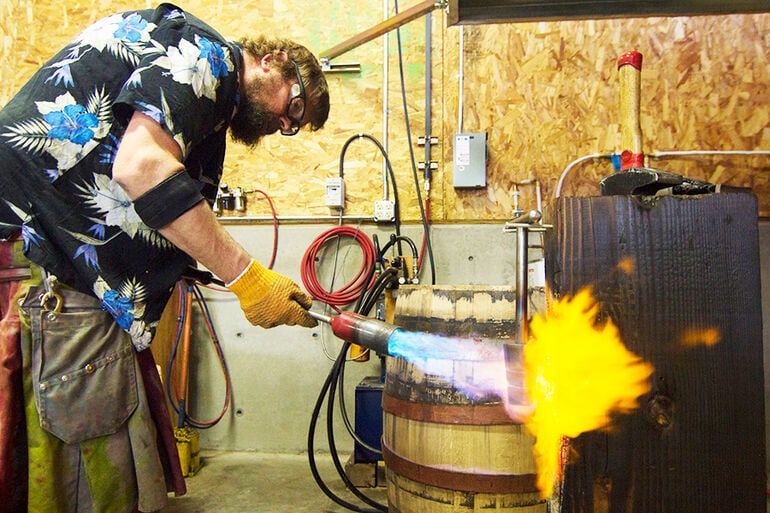
The Role of Coopering in Barrel-Aged Beers
by Jim Dykstra
At this point, wood-aged beers are far from obscurity. They are the Bender in The Breakfast Club of trending beer styles: brooding, powerful and often surprising in their character arcs throughout the aging process. For most, the flavors imparted from wood aging is where the line of focus is drawn. However, the path to wort on wood action is anything but dull, requiring expertise in an esoteric profession whose fate teeters on the brink of obsolescence.
The profession is coopering, which involves the creation of wooden, staved vessels held together with hoops and flat heads. Though the technological revolution has whittled it down to an oaken shell of its former industrial glory, coopering has found new life in the craft brewniverse, blending the line between art and science. Throughout upcoming issues, we’re going to pull the nail, open the bung and take a look at the intersection of wood, beer and the proud few who burn the torch of a bygone era... CONTINUE READING
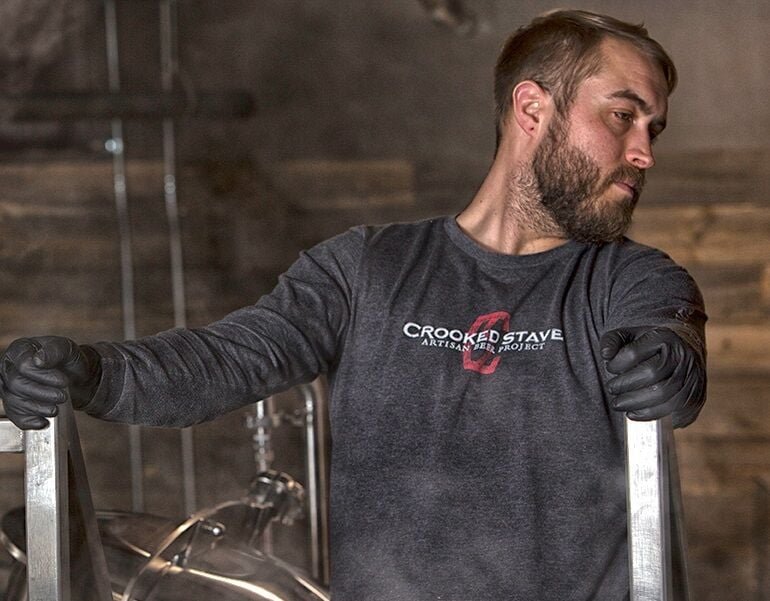
Chad Yakobson of Crooked Stave
by Jonathan Ingram
The image of the brewer who is part mad scientist and part artist has long been one of the iconic images of craft brewing lore. With Chad Yakobson, it seems to work the other way around. He's more of a pure scientist who gets a little crazy on the artistic side with his Crooked Stave Artisan Beer Project, where the specialty is mixed-culture fermentations and Brettanomyces beers.
While earning his master’s degree at Scotland's Heriot-Watt University in the school's distinguished center of brewing and distilling, Yakobson wrote his dissertation on Brettanomyces yeast, which is now beer-world famous. The idea was to isolate strains of Brettanomyces, then study how they worked in the fermentation of wort and what compounds they produced in the process. Available online, the dissertation reads scientifically, but is totally engaging for anyone interested in the process of making beer. It also serves as a great introduction to the underlying appeal of sour beer as a more creative vessel for brewers... CONTINUE READING

The Great Taste Adventure of Swedish Beer
by Jim Dykstra
Sweden is exactly the kind of place where you could imagine fairies flitting flower to flower, or mountains and streams speaking to you in whispers and grumbles. It’s the kind of place of where you may trip over an obstruction in a forest pathway only to realize it’s actually a Viking longsword.
Whether in the bustling southern region where Stockholm, and more than seven million of the country’s ten million total inhabitants are located, or the old rustic North, it all feels like hallowed ground. And it is, in a way. Swedish common law of allemansrätten dictates that all men and women have the constitutional right to legally wander land, whether public or private. Of course this excludes criminal or otherwise destructive activity, but the result is a country that treasures all of its land, and the difference is noticeable... CONTINUE READING

What is Brettanomyces?
by Jim Dykstra
Mr. Brettanomyces lurks where you’d least expect – perching in the rafters of your brewery, watching. He moves almost weightlessly, soaring effortlessly with the lightest breath. He consorts with the insect kingdom, most notably fruit flies, who transport him without question, and worms his way into your wort, finding refuge in the dank crevices of your whiskey barrel or gradually inching along your pipes until he finds his prey. He guzzles your sweet nectar, leaving a reeking wake of questionable by-products in your beer. Yet, by many he is loved. Who is this mysterious, shadowy figure and what does he want with our ales?
Brettanomyces is the most notorious yeast in the game. Aficionados heap praise at his ovoid or sausage-shaped feet while the uninitiated run for the nearest clothes-pin to bar their noses from his odor... CONTINUE READING
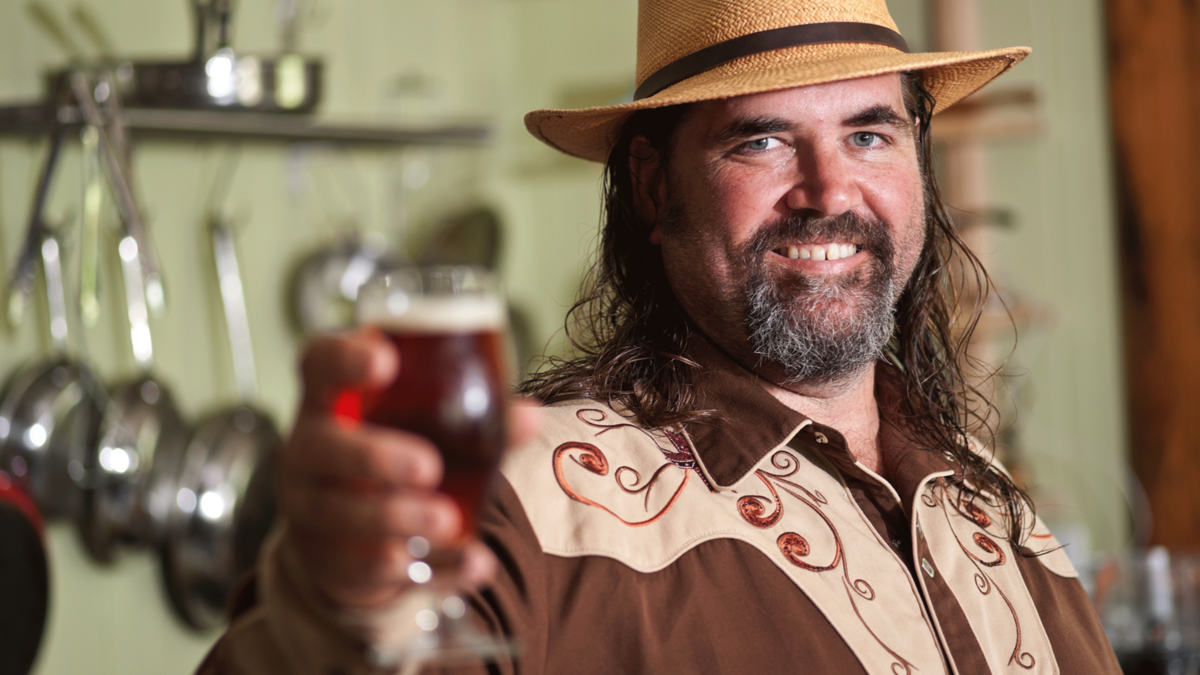
Talking Beer in 2017 with Fred Bueltmann of New Holland
by Jim Dykstra
New Holland's Fred Bueltmann embodies the best of the craft movement – preaching an ethos of values-driven business, collaboration over competition and a deep-rooted passion for sensory experience. We spoke with Fred to get an idea of how the game has changed for breweries navigating the Heraclitean marketplace, how craft ideology dictates decision-making and how his company has kept itself a step ahead of the curve.
A Philosophy of Quality
For Bueltmann and New Holland Brewing Co., the craft consumer's experience is the ultimate goal – making it comforting and rewarding with really thoughtful, high-quality food and drink all the way around. This mindset extends not just to beer, but food, liquor and everything in between, and is on full display at their destination brewpub and restaurant The Knickerbocker, which opened in Grand Rapids late in 2016... CONTINUE READING
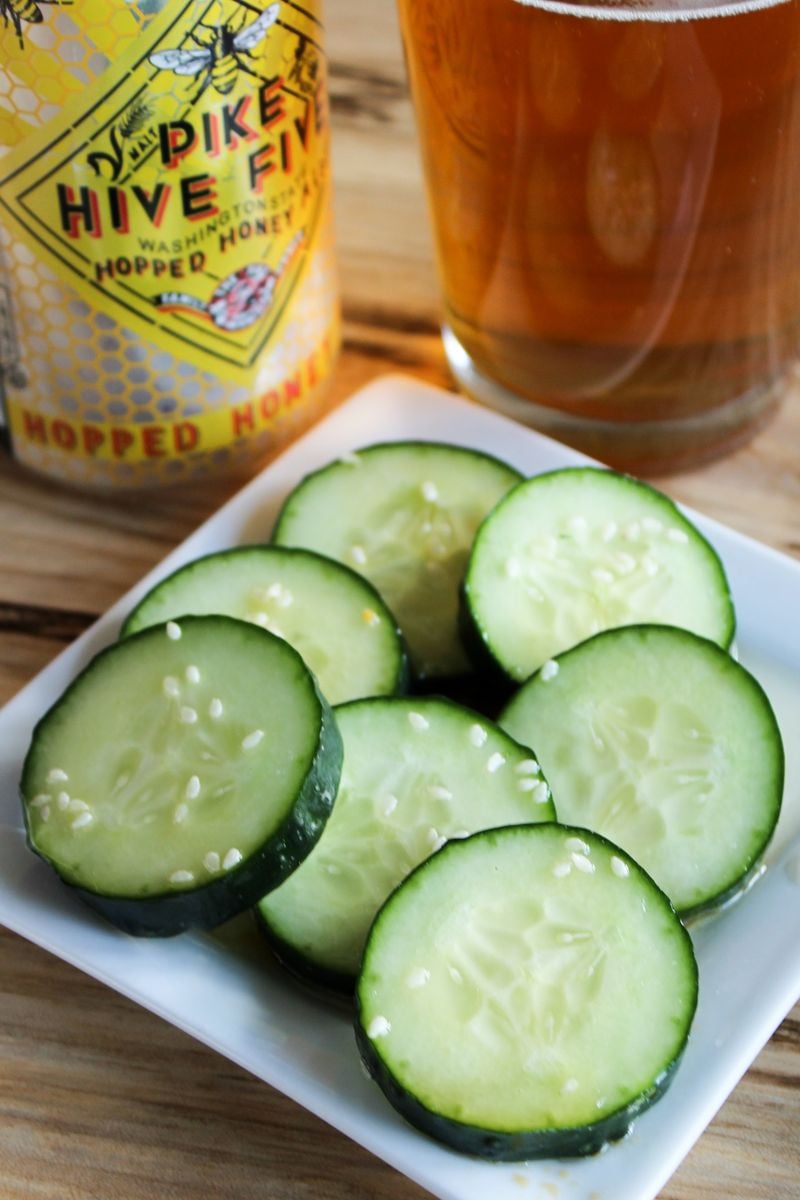
Japanese Delicacies Paired with Golden Ale
by Sherry Dryja
A dinner menu inspired by the fresh flavors of Japan is a fun way to travel to the other side of the world without leaving your own kitchen. Our menu abides by the traditional flavors of Japan while being mindful of what’s in season closer to home. For instance, our version of Kenchinjiru, a vegan vegetable soup, uses asparagus in lieu of the traditional burdock root as a way to take advantage of the abundance of the season. This earthy soup can accommodate almost any combination of vegetables, so you can enjoy it every season of the year. It works well as an appetizer before the meal, as a hearty lunch, or even as a filling dinner on its own.
Our Teriyaki Salmon is another way to bring Japanese flavor to the table this time of year, especially if you’re itching to dust off the grill. This recipe is as easy as whisking together a marinade of five simple ingredients and marinating the salmon for an hour or two before cooking it up on the grill or in the broiler. The end result is salmon that is sweet and savory as well as moist and tender... CONTINUE READING


